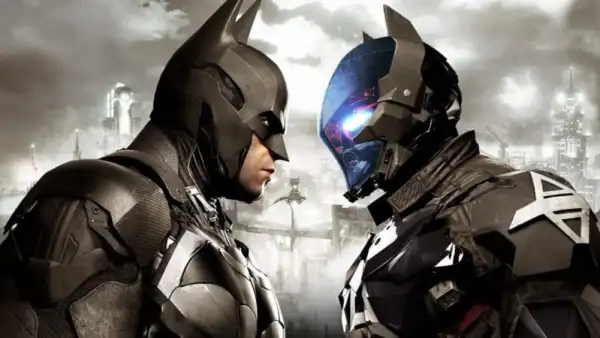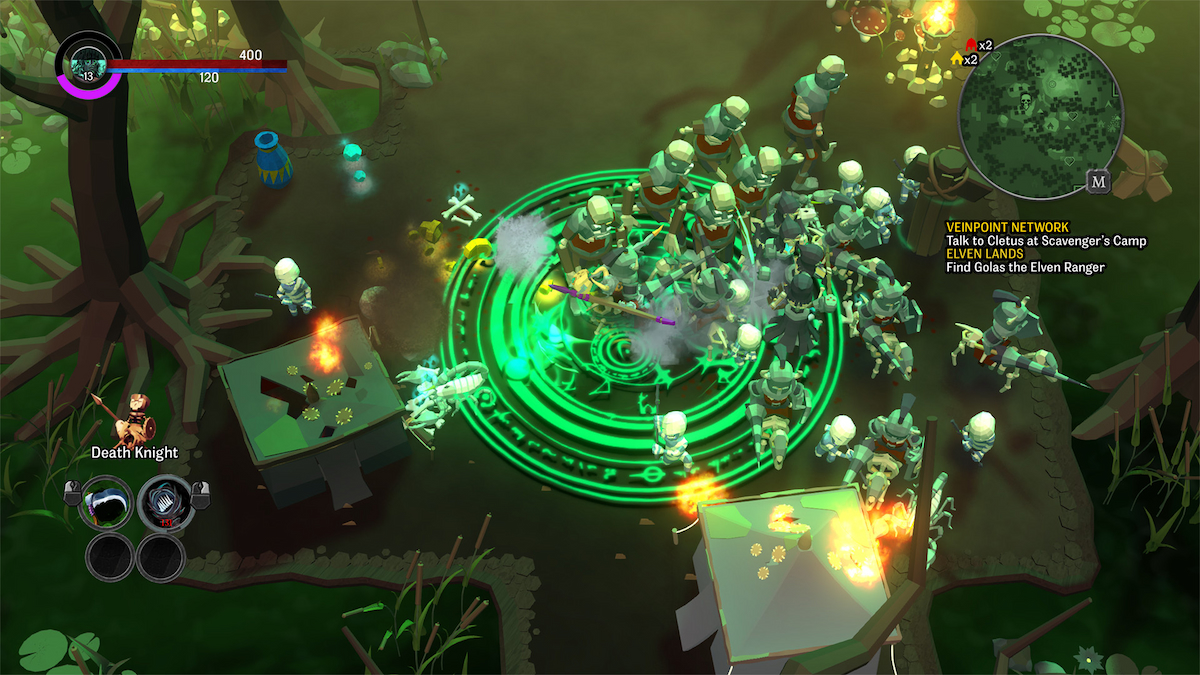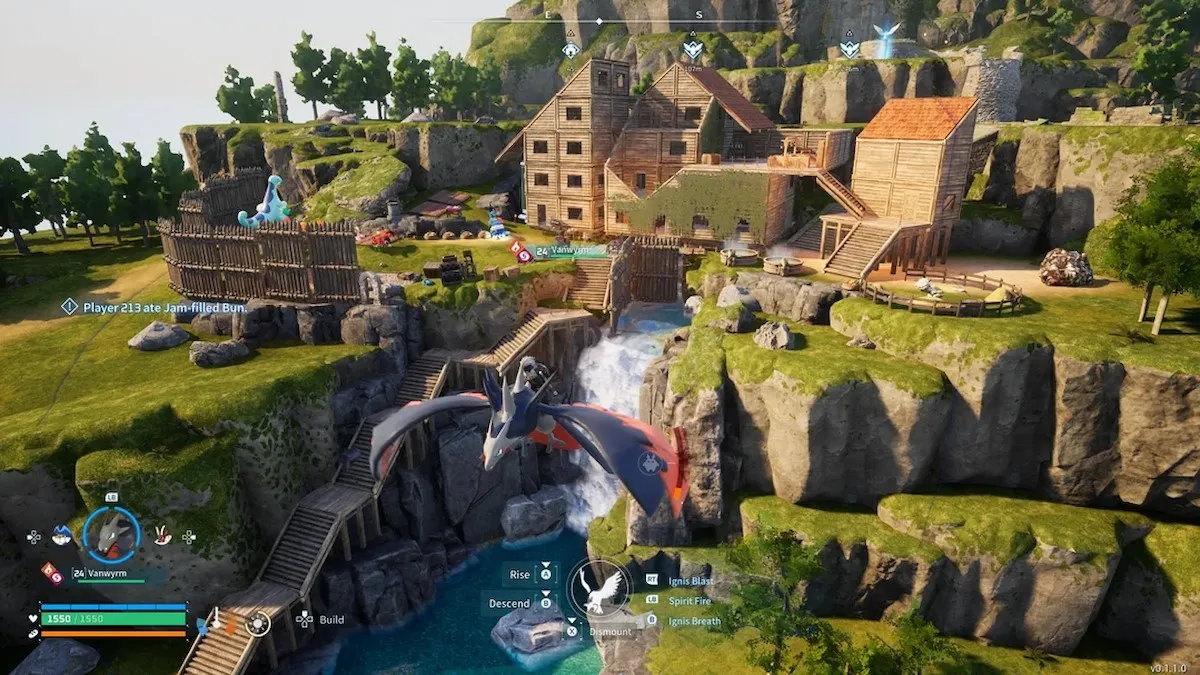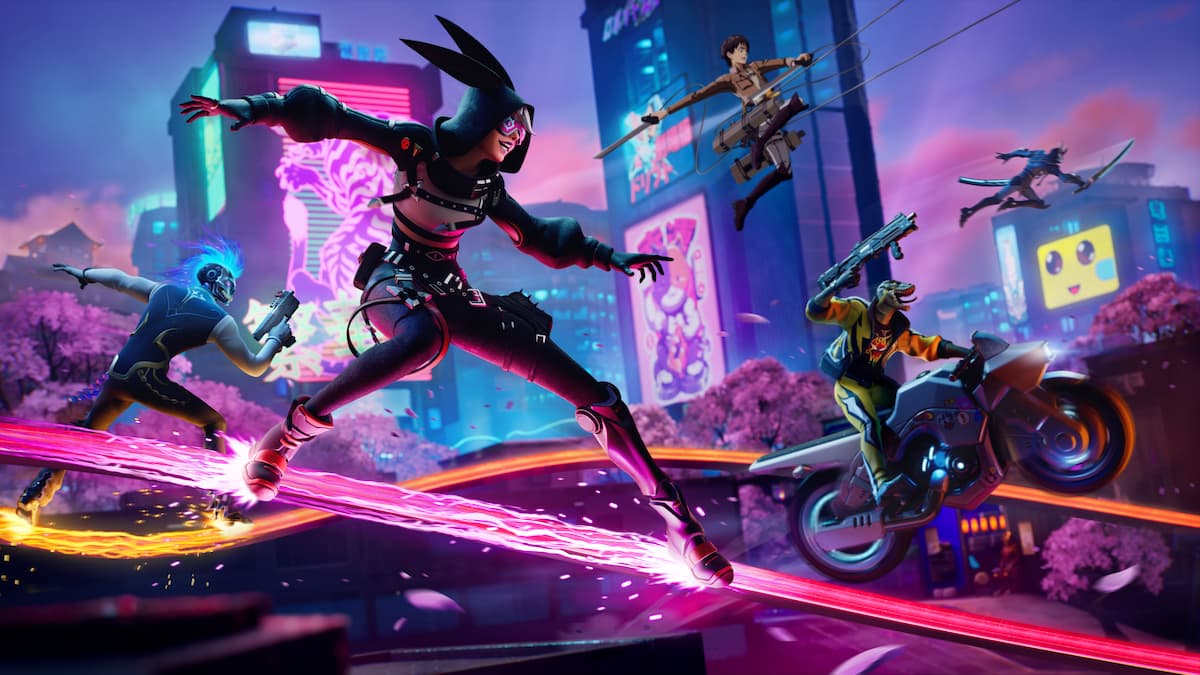Batman: Arkham Knight’s Secret Ending

If you’ve seen the Batman: Arkham Knight 100% completion true ending, then there’s a good chance that your mind is still spinning around in circles searching for something concrete to latch onto. Don’t worry; you’re not alone.
This game’s ending, as well as its storyline, is more convoluted than one of the Riddler’s challenges. Except, when you begin a Riddler challenge, at least you know it has a definitive correct answer or solution. This is not the case with the Batman: Arkham Knight 100% completion true ending.
In fact, there’s a good chance that the reason it’s hard to understand what happened in theBatman: Arkham Knight ending is that Rocksteady doesn’t want us to understand. We know that Rocksteady Studios intends for Batman: Arkham Knight to be the last installment in the Arkham trilogy. As a way of leaving fans always craving more and asking questions, it’s probable that the game’s ending is intentionally ambiguous.
Before we branch out too far into the many possibilities than can follow from this line of thought, let’s take a look at the ending piece by piece within the context of Batman: Arkham Knight’s storyline, starting with the regular game ending and then continuing on to the secrets.
MAJOR SPOILERS AHEAD. YOU’VE BEEN WARNED.
Batman: Arkham Knight 100% Knightfall Protocol Completion Ending

As the video begins, Batman removes his mask as he approaches the Bat-signal. He then summons the Batwing and has it return him to Wayne Manor. Outside the estate, we see GCN reporter Vicki Vale on the scene, breaking the latest news.
As Bruce Wayne walks into his mansion, Alfred asks him one last time if he’s sure that he wants to do this. And of course, Bruce Wayne confirms, reminding Alfred that it’s the only way to protect the people. We then see the entire mansion explode, controlled demolition style, with the flames rising up into the air to form the image of a burning bat symbol. This is where the regular ending stops.
In the extended Batman: Arkham Knight 100% completion true ending, we pick up with Jim Gordon smoking a pipe and giving a monologue, talking about how criminals need something to be afraid of in order to be defeated. He receives a text from Tim Drake (Robin) saying, “Don’t forget the ring,” implying that he is marrying Barbara and that the reason we see Jim all gussied up in that adorable bow-tie is because he’s on the way to the wedding.
The scene then closes in on what’s obviously a re-enactment of the murder scenario of Bruce Wayne’s parents that he witnessed as a boy. However, this time the horrible scene is not of the Wayne family. It’s more of a deja vu than a re-enactment. As far as we’re shown, the scene is a symbolic portrayal of that horrible night being experienced by some other unlucky Gotham family. It’s all too familiar but at the last second, the thugs see a Batman on the rooftops.
They mock him at first, letting him know they no longer fear the old symbol of the now presumed to be dead hero. This is the point at which everyone loses their minds. Suddenly, pillars of black smoke begin to emerge from Batman as he levitates into the midair. The darkness explodes into a gigantic black bat symbol composed of hundreds of individual bats, glistening boldly against red-orange flames which eerily resemble the glow of the Scarecrow’s fear toxin scenes.
This is where we all ask,“Was the man on the rooftops Bruce Wayne or Not?” Similar to the ending of Batman: The Dark Knight Rises, it’s a difficult question to answer whether or not the man you are seeing at the end is indeed Bruce Wayne or not. There will perhaps never be a “true” answer unless Rocksteady decides to reveal one. So for now, let’s do the best speculating that we can.
Understanding the Details of Batman: Arkham Knight

Before we can understand the ending cutscene, let’s take a moment to think about what actually happened in Batman: Arkham Knight. Between Joker, Barbara Gordon, and Jason Todd, a constant theme of the game is a character appearing to be dead, gone, and out of the picture, but then reappearing in a shocking manner later on.
While it’s easy to get caught up in the ending cutscene, we must also keep in mind that there’s a good chance that the same writers who included this theme throughout Batman: Arkham Knight, the same skilled staff who has cleverly woven intricate details and hidden easter eggsinto the game, might have intentionally made this a big theme in Batman: Arkham Knightbecause they wanted to clue us in about the ending.
This is Batman, right? We’re detectives, right? It stands to reason that if Rocksteady presented us with a mystery, they also might’ve given us some clues. And, it also stands to reason that those clues might come in the form of subtle themes and overarching symbolism. There are the symbolistic images we see on the surface but there is also a deep metaphoric meaning that lies beneath.
Let’s also take a look at the the internal conflict that Batman or Bruce Wayne was experiencing throughout the game. From start to finish, the subliminal undertone of this game is the story of a middle-aged man having an identity crisis while he isolates himself from the world, watching everything burning and collapsing around him, struggling to re-define himself at this stage of his life relative to the chaos and madness of the world.
As Catwoman comments at some point during the Riddler challenges, Batman is a master of repression. While it almost seems as though Batman is fearless, he is not. He fears for the safety of his friends and loved ones. He fears for the safety of Gotham and the innocent people within. He fears for his own safety as well as fears for the safety of his secret identity. All of this begins to change as the Scarecrow toxin, combined with the effects of the Joker toxin, works its way throughout Batman’s body.
While Batman has a dubiously powerful immunity to Scarecrow’s fear toxin, he’s still human and at some point, his fears start to crack through his dark wall of solid stoicism. Yet, since Batman is no ordinary human, his fears do not manifest in the forms of overwhelming hallucinations that dominate his general perception of reality. No, instead, Batman’s master repression tactics have converged all that he fears into one convenient archetypal, subliminal, metaphoric image: Joker
Although Joker is arguably the best character in Batman: Arkham Knight, he doesn’t actually exist in the game. Rather, he exists in the perception of the player and of Batman as the manifestation of all his fears personified and projected. In Freudian terms, he is Batman’s id. In colloquial terms, he is Batman’s ego. The Joker in Batman: Arkham Knight is a symbol of Batman’s burning desire to make a lasting impression on the world and to be remembered.
The Joker, in this metaphor, is all of Batman’s repressed thoughts and decisions. When Batman choose to subdue his foes in a non-lethal manner, he is not doing so because he feels no desire to kill. He is instead overcoming his Joker-esque desire to kill. Batman is a complicated character because his mind is always at war with itself, always dualistic in nature. Batman is constantly maintaining a balance between giving into his primal urges and forcing his will power to overcome those darker instincts for the sake of justice.
To put it simply, he walks the line.The man’s self-image struggles to find a place to exist between multiple personas. That is why he must be the dark knight Gotham needs and not the white knight that it deserves.
While the portrayal of this man walking the line makes for an awesome character for fans to admire and cheer for, this type of internal psychological landscape is probably a hellish nightmare for Bruce Wayne. How does a man with the two powerful public identities of Batman and Bruce Wayne and a subconsciously repressed Joker identity decide for himself who he actually feels as though he is?
How? Dose after dose of Scarecrow’s fear toxin. That’s how. Under the influence of Scarecrow’s fear toxin, Batman is no longer able to maintain his internal subconscious walls of repression and stoicism. Through confronting his fears, Batman confronts every contradiction within himself. He is no longer able to walk the line. He must make a decision. Who is he? What does he stand for?
With all this in mind, let’s go back to the ending cutscene video, this time with new eyes.
The Open-Ended Conclusion of Batman: Arkham Knight

In the beginning of the video, when Batman removes his mask to commit his public suicide/framed homicide we must ask ourselves, what is the metaphoric meaning behind this gesture? Since we know that Batman would never have killed Alfred, who presumably would also have been in the explosion, and probably wouldn’t have killed himself either, we can see this suicide as more of a symbol or metaphor than as a representation of an actual suicide.
We can imagine that we are not watching the death of Batman along with the man beneath the mask, but rather we are witnessing the psychological destruction of solely Bruce Wayne. In the scene where Batman confronts Joker, he reminds us of his famous lines, “I am vengeance. I am the night. I am Batman.” This is not just an awesome throwback to the famous phrase that fans love. It is Batman’s mind choosing to identify with one image, as it erases the other choices along with the lines of psychological separation. This is not just Batman affirming who he was and always has been. No. This is Batman reborn.
When we see the scene of what’s meant to replicate the Wayne murders, we’re hit with symbolism again. Here, where we see the exact re-enactment of the Wayne murder, down to the pearls crashing to the floor, we can almost feel the forced presence of the writers’ decision to create this scene as an analogy to Bruce Wayne’s childhood.
The Batman: Arkham Knight secret ending is more of a visualization of an expression of ideals than it is a continuation of Batman: Arkham Knight’s storyline. When the criminals look up and see the Batman there above them, it’s hard to say whether he is a symbol of Batman’s legacy, or whether the man himself has returned to the shadows to continue carrying out the work he started.
But there’s at least one statement we can make with certainty. In response to the question on all of our minds, “Was the man on the rooftops Bruce Wayne or Not?” No. He was not. Bruce Wayne died. But Batman lives on.
Of course, this still begs many more questions such as, “But was it the man who was formerly Bruce Wayne in that suit? Was it someone else taking his place? Were the thugs just hallucinating? Does the Scarecrow’s fear toxin have a role in all of this? If so, what is it?” Unfortunately, there are no definitive answers to those questions at this time.
People have also begun to speculate about the identity of the man on the roof wide and have compiled a wide range of potential individuals such as Tim Drake, Jason Todd, Azrael, Dick Grayson, Damian Wayne, or even Terry McGinnis. In response to that, we’ll say that if there’s anyone under that cowl that isn’t the man who was formerly Bruce Wayne, then it isn’t any of these guys either.
While it’s understandable why all of these characters are being speculated about, if you really think about it, replacing Bruce Wayne with any of these individuals given the story of Batman: Arkham Knight as well as the previous games either just doesn’t make sense at all or is a tremendous stretch. We’d like to believe that isn’t what the writers and developers have left us with. So, we’ll give them the benefit of the doubt on this one.
Although it’s impossible to distinguish whether Batman was meant to be real or a symbol from that one scene, we can say that if there was a indeed a man beneath that cowl, it was either Bruce Wayne or an entirely new Batman from a future in which that’s a real thing. Ring a bell? This new Batman could potentially even have been trained by the former Batman himself, as is the case in Batman Beyond.
Some evidence of this and cause for speculation around this theory is a small but important detail from the game’s concept art. There is a picture of the figure from the Batman: Arkham Knight 100% completion true ending. It is titled NIGHTMARE BATMAN and is captioned, “Is It Real?” Here we can see Rocksteady’s self-awareness that its Batman: Arkham Knight ending is intentionally ambiguous, open-ended, and thought provoking. However, what lends some evidence to the Batman Beyond theory is that in the picture, we can see a red Batman chest symbol which bears an uncanny resemblance to the Batsuit design in Batman Beyond.
This also still doesn’t tell us anything about whether the fear gas is part of some metaphor, still in people’s systems from Scarecrow’s terrorist attack, or being used intentionally by the new Batman or by some other party.
Oh well… You’ll have to come to your own decisions in those realms. But personally, I choose to believe that the man formerly known as Bruce Wayne became the living spirit of Batman, trained a Batman Beyond type character to fight crime, and allowed for a new exception that the Batman can shoot criminals with fear toxin darts before delivering tight-fisted justice as part of Batman’s classically morally ambiguous style of preventing crime.
But of course, you aren’t forced to accept any of this as fact. We want to know what you think about the Batman: Arkham Knight ending. Tell us your theories and speculations in the comments. Tell us what you thought of this explanation. Loved it? Hated it? Have adaptations to it? Don’t hold back. Share it all with the rest of us.
If you haven’t had enough of Batman: Arkham Knight, and would like to pursue more criminals and challenges, be sure to check out our growing Batman: Arkham Knight wiki for guides, tips, tricks, and more.
And, For a steady stream of hilarious, intellectual, and exciting video game articles and news, and especially for more Batman: Arkham Knight content, like Twinfinite on Facebook.












Updated: Jun 5, 2016 03:07 pm